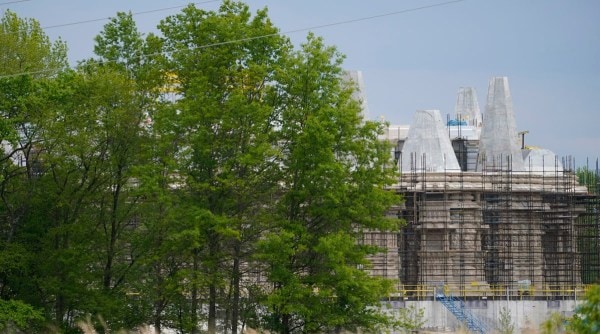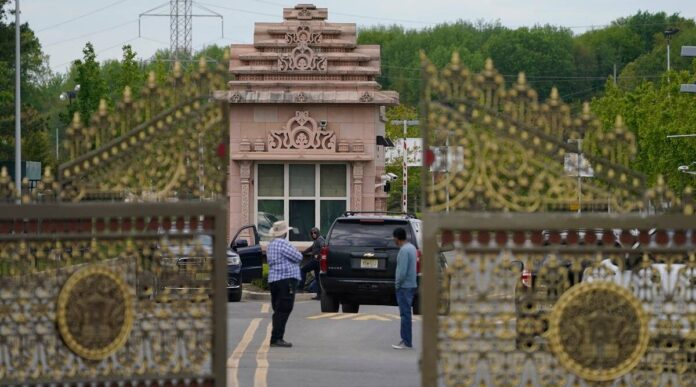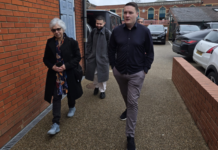Hundreds of marginalized workers from India were recruited to build a massive Hindu temple in New Jersey where they were forced to work long hours for low pay in violation of US labor and immigration laws, according to lawsuit filed on Tuesday.
The complaint, filed in US District Court in Newark on behalf of more than 200 Indian construction workers at the temple, alleges “shocking violations of the most basic laws applicable to workers in this country, including laws prohibiting forced labor.”
The suit, filed by five of the workers, accuses their employer, Bochasanwasi Shri Akshar Purushottam Swaminarayan Sanstha, or BAPS, and related entities of recruiting them in India, bringing them to the United States and forcing them to work on the temple for more than 87 hours a week for $450 a month, or about $1.20 an hour.
New Jersey’s minimum wage is $12 an hour and US law requires the pay rate for most hourly workers rise to time-and-a-half when they work more than 40 hours a week.
 A part of the BAPS Shri Swaminarayan Mandir is covered in scaffolding in Robbinsville Township, N.J., Tuesday, May 11, 2021. (AP Photo/Seth Wenig)
A part of the BAPS Shri Swaminarayan Mandir is covered in scaffolding in Robbinsville Township, N.J., Tuesday, May 11, 2021. (AP Photo/Seth Wenig)
The suit says the workers were kept under constant watch and were threatened with pay cuts, arrest and return to India if they spoke to outsiders. On Tuesday, FBI agents visited the sprawling ornate temple in rural Robbinsville, just east of Trenton.
“We were there on court-authorized law enforcement activity,” Doreen Holder, a spokeswoman for the Federal Bureau of Investigation field office in Newark, confirmed by telephone. Holder declined to say how many agents were on the premises or elaborate on their mission.
A spokesman for BAPS, which describes itself as a socio-spiritual Hindu organization, issued a statement saying, “We were first made aware of the accusations this morning, we are taking them very seriously and are thoroughly reviewing the issues raised.”
The suit said the BAPS entities own the land where the temple was built and arranged for its construction. The temple has been open for several years, but work on extending it is ongoing.
The plaintiffs, who claim to have worked on the temple as stone cutters and other construction workers as far back as 2012, said that in India, they belonged to the Scheduled Caste, formerly considered “untouchables” and socially ostracized.
Once on their construction jobs, the complaint said “they were forced to live and work in a fenced, guarded compound which they were not allowed to leave unaccompanied by overseers affiliated with (BAPS).”
The suit, which also claims the workers were falsely classified as religious workers and volunteers when they entered the country, seeks “the full value of their services” as well as unspecified damages and other compensation.
(By: Reuters | New York )

Readers like you, make ESHADOOT work possible. We need your support to deliver quality and positive news about India and Indian diaspora - and to keep it open for everyone. Your support is essential to continue our efforts. Every contribution, however big or small, is so valuable for our future.












If it’s found to be true then it’s tragedy for BAPS movement however I’m always under the impression that workers were devotees who volunteered for the service and appropriate working rule measures were taken in accordance with local laws
There are obviously forces working against Hinduism currently when one looks at vulture journalists publish images of funeral pyres without caring for dignity of bereaved during terrible COVID crisis
The NY Times has even gone further in connecting BAPS to BJP once again spreading hatred against Hindus by bringing the scheduled caste angle
We have to stand united and defy fake or exaggerated news against our community and India
How can we help to remove such practices which are very common in India and with Indian contractors in Africa and middle east.?